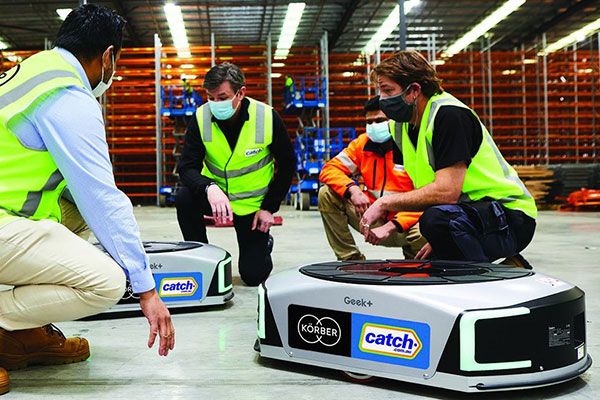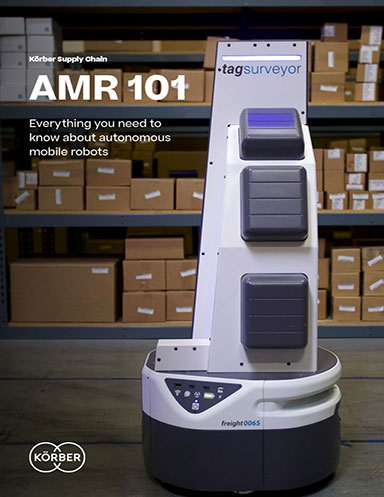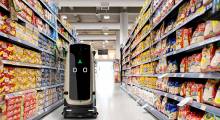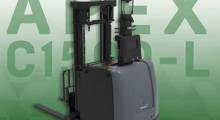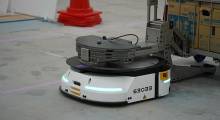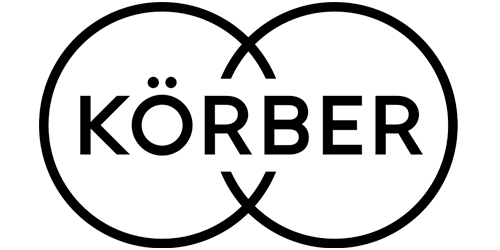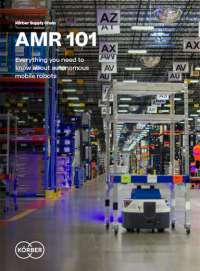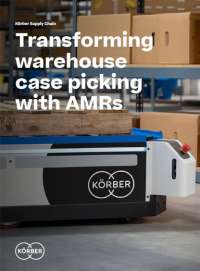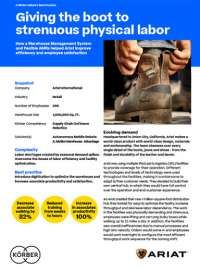For many, supply chain priorities are centred around speed, precision and safety – all at the same time exploring ways to reduce the total cost of ownership of any investments.
Australia Post recently unveiled some staggering statistics around online retail uptake in Australia. Data from the nation’s parcel service revealed Australians spent an incredible $50.5 billion online last year. As the volumes continue to grow, retailers and third-party logistics providers (3PLs) are competing on faster fulfilment, last mile delivery and stock visibility.
A key differentiator in this highly competitive environment is the ability to make quick decisions not only cope with but also capitalise on the rising volumes.
Learning from the leaders: Catch Group's transformation
One of the best examples of business transformation in Australia is Catch Group, one of the nation’s largest e-commerce marketplaces.
In a move that saw it shake up its supply chain strategy, the leading retailer partnered with Körber to deploy more than 100 autonomous mobile robots (AMRs) at its distribution centre in Melbourne, Australia.
Utilising its power to make quick decisions in a challenging situation, Catch Group introduced flexible automation in order to meet huge spikes in demand due to COVID-19.
The AMRs now provide the leading retailer with the ability to pick an additional 2,000 orders per hour and add a further 20,000 stock-keeping-units (SKUs) to its original 80,000. These capabilities played a major role in the e-commerce leader being able to grapple with its busiest-ever peak period on record last year.
Previously the retailer had invested in traditional large-scale automation, which was serving Catch Group quite well until COVID-19 forced the entire country to shop online – driving a dramatic shift in consumer behaviour.
Two of the most common issues with traditional automation are cost and long lead times. Any expansion of current systems and solutions usually takes around two years, and if a solution needs to be installed from scratch, the lead can take up to three years.
In April 2020, along with many retailers, Catch Group’s volumes had reached previous Black Friday or Cyber Monday levels. Christine Holgate, former CEO of Australia Post described this huge spike in demand as being “like the Suez Canal coming down a drainpipe.”
With peak period looming, and volumes continuing to rise, Catch Group didn’t have three years to play with. As a result, they chose AMR – a more flexible and agile technology that can be deployed in less than three months.
With fixed and traditional automation still playing a role in Catch Group’s operation, AMR gives the retailer the flexibility and agility they need to keep up with the rising volumes.
AMR also provides the ability to adapt the layout of the technology to cater to a change in SKU profile or customer demand. This is very difficult to do with fixed automation as any changes commonly again incur huge costs and long lead times as well as a major impact to operations.
As COVID-19 led to such a dramatic change in consumer behaviour, customers habits and buying patterns are still hard to predict. As such, AMR can adapt as your business changes. If you need to move to a bigger site, they can move with you. This can’t be said for traditional fixed automation.
The changing face of the 3PL
At the height of the online shopping boom in May last year, social media platform Instagram launched its marketplace tool, allowing retailers to sell directly to Instagram’s 10.45 million users in Australia.
After the initial success of this new feature, in November last year Instagram expanded its e-commerce offering and made it easier for brands to market to their followers by adding a ‘Shop’ tab to its social media platform.
With many retailers selling their products on Instagram experiencing double, triple and in some cases quadruple growth, they are now looking to external businesses to manage their freight and logistics.
Historically 3PLs would work on long-term contracts for major retailers. But e-commerce has driven a distinct shift in the retail world, as small businesses have used COVID-19 to pivot their approach and have established a comprehensive online offering.
With this shift, comes an opportunity for 3PLs to be more flexible in their contract terms. A small retailer is unlikely to sign a three-year contract. If 3PLs can find ways to rapidly onboard new retailers and offer short-term contract options by utilising the benefits of flexible technology such as AMR, they will find themselves with a new market opportunity.
We’re already seeing a lot of 3PLs explore ways that they can win this new category of business through investing in the right kind of technology that enables them to rapidly onboard new customers and offer flexible contracts.
Beyond throughput goals
While the goal with any technology implementation is to enable faster and more efficient fulfilment, it’s important not to overlook the impact on the larger supply chain.
What might be a great solution in your picking processes, might have an impact further down the supply chain, such as in packing or outbound operations.
At Körber, we think beyond throughput goals. We develop solutions that consider the entire breadth of supply chain operations. Through our wide range of solutions, we offer efficiencies in picking, packing and sorting through a variety of different technological applications that work together to create synergies and efficiencies.
From our recently launched subscription-based Android Voice solution, to our tried and tested AMR solution, to our industry-leading software solutions – we get that a supply chain makes or breaks a business. As a result, we have invested in and developed the right solutions and capability to turn your complexity into an opportunity.
Related Resources
AMR 101 - Everything You Need To Know About Autonomous Mobile Robots
Autonomous Mobile Robots improve logistics and operations efficiency by supporting floor operations, transportation, and processing, and rather than replace people entirely, AMRs should take on the most repetitive, time-consuming, and dangerous tasks, to save on manual labor. Download Now!
Article topics
Email Sign Up

